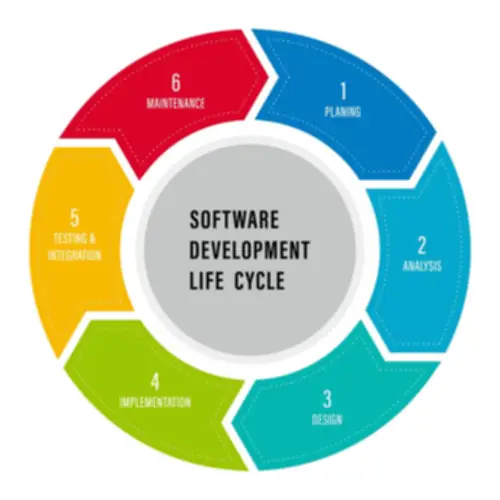How To Mechanically Generate A Component Specification And Style Information In Figma
Additionally, some standards could evolve over time and introduce modifications that may have an result on the steadiness and compatibility of present natural language processing components and methods. Software element specification requirements are widely used throughout completely different domains, languages, and platforms. By reusing present components as a substitute of making new ones from scratch, you’ll have the ability to be positive that components have clear and constant interfaces, behaviors, and dependencies. Additionally, these requirements allow elements to run on completely different platforms and environments whereas providing a common language and format for describing and documenting them.
- Artwork is paired with element-by-element annotations of the reading format, an example in apply (matching the artwork), and the role of the component described.
- Furthermore, it is very important check your components utilizing the usual’s testing tools and methods, as well as share them using the usual’s packaging and deployment mechanisms.
- You can set up component specs to use custom fields that require textual content entries.
- Additionally, the non-functional requirements outlined in part 4 of this document are relevant to every OpenHIE Component.
Core Part Technical Specification
Component specification defines the interface, conduct, and constraints of a component and offers a blueprint for its improvement, testing, and integration into the system. During the rising years of design techniques (2015–2018), designers and developers type teams to crank out components. Tight collaborative connections favored conversation over artifacts to align, decide, and move ahead. As a element design stabilized, designers might need erratically sprinkle callouts, tidied up the variant grid, or redlined a variant. Sometimes, you should cloud component specifications have extra information on document for the elements on a unit. EightShapes Specs created by Nathan Curtis may help you automate the manufacturing of page and component design specs of chosen parts, instances and frames.

Openhie Element Specifications
The CCTS key concepts encompass two focus areas – core components and business data entities. Fundamentally, core components are sematic building blocks that can be utilized for all features of information and information modeling and trade. Business Information Entities (BIEs) is defined by Core Components act as conceptual fashions.
Working With Element Specs Based On Numeric Textual Content Strings

Related work consists of the OASIS CAM specification and OASIS Registry Repository specification. Among the many potential different element accessibility spec formats, I’ve most often encountered remedies on Focus order, Announced order, and Alternative textual content. Nevertheless, for a few years, design system groups had been small and strong sufficient to speak typically and synchrously enough to agree on those things. Inspection in general requires considerable scrutiny and persistence to search out each choice you’ve made.
Detailed Specification (componentspec)
If the placement of the referenced file adjustments, you only want to vary it in one place (in components) as an alternative of in all references. Every part has a element specification, a file ending in .jwc whoseroot factor is . Item specifications affect the metric calculationsof an idea. The attributes Quality and Alternative define theusage of an item in a higher-level concept component. Thisgroup of properties is used to uniquely identify this componentspecification and determine the component that this specification is usedto capture. A version history could be useful for spec readers to grasp what’s changed since they referenced the specification in their very own work.
The definitions in elements don’t have any direct effect on the API until you explicitly reference them from someplace exterior the components. That is, parts usually are not parameters and responses that apply to all operations; they are simply items of knowledge to be referenced elsewhere. Under components, the definitions are grouped by kind – schemas, parameters and so on. A single code library has given approach to building throughout platforms. A three platform setup (iOS, Android, and web) is widespread, and a few systems like IBM Carbon unfold across many more.
Versions are usually added each time a department is merged that changes the specs. While I’m not an accessibility expert, I’ve labored with many designers who know more than I do to explain the auditable expectations of how a compoennt is built. For instance, Felix Kuo and I labored to refine an in depth part on Screen studying. Artwork is paired with element-by-element annotations of the reading format, an example in follow (matching the artwork), and the role of the factor described.
Adapters and bridges can translate and mediate between different requirements, enabling interoperability and integration of elements from completely different sources. Abstraction and encapsulation can cover the small print and complexity of standards, whereas version management and configuration administration can observe and handle modifications and updates of standards and components. All of those solutions work to ensure consistency and compatibility of elements and systems. To use software part specification standards effectively, you have to abide by some greatest practices. This consists of selecting the right standard on your domain, language, and platform, taking into account its options, benefits, and limitations. Additionally, you should observe the specifications and conventions of the chosen normal and document your elements with clear and complete data.
Property specs can even highlight non-visual props related to code, accessibility and content, often in a tabular format. The development in direction of larger flexibility has design methods considering in slots and subcomponents and providing smaller elements. This disperses configuration across extra components of larger nested depth. Specs help us expose, determine, and evolve the place we goal each feature. For design methods that scale, groups are discovering it essential to put in writing down all the main points once more. The plugin can generate a component’s anatomy, properties and format spacing.
Furthermore, you will need to test your parts utilizing the standard’s testing instruments and methods, as properly as share them using the usual’s packaging and deployment mechanisms. Overall, component specification is a important facet of software program growth that helps to make sure that the components are designed and implemented appropriately and meet the system’s necessities. It offers a clear and detailed description of the component’s purpose, performance, and constraints, which helps builders to build software program that is modular, scalable, and maintainable. Software component specification A exact statement of the results that the software program part of a system is required to achieve. When growing a system, manufacturing of the software necessities specification is typically followed by a interval of preliminary investigation and high-level design. It is then potential to establish any essential hardware parts of the system and to produce the software program part specification for the software component.
Software element specification requirements include their own set of challenges. Compatibility points can come up when integrating parts from totally different sources or standards due to varying assumptions, expectations, and implementations. Complexity points can come up from verbose specifications and formats, which can increase the educational curve and improvement effort for developers and customers.

Each of the parts is outlined and necessities and recommendations are documented. Additionally, the non-functional requirements outlined in part four of this doc are applicable to each OpenHIE Component. Designers can add appreciable detail throughout broad concerns to ensure a part design is implemented accessibly. Stephanie Walter gave a great discuss at the Clarity Conference in 2022 about A Designer’s Guide to Documenting Accessibility & User Interactions. An anatomy breaks down a component into elements, itemizes and names every one, and can describe visible attributes (like textual content color) and configured properties (of nested element dependencies). The initial set of specs will concentrate on the Common Services Components.
Therefore, I advise teams that design specs and design pointers overlap yet have completely different audiences and intents. The overlapping content material can take differing types corresponding to a spec’s Anatomy including far more detail than an identical, simpler Anatomy of design pointers. Instead, specs are managed over time throughout a redesign cycle, because it evolves, as it’s adjusted when built for a number of code platforms like React, Angular, iOS and Android, and after it’s launched. Text wrapping, also labeled as Overflow, illustrates what to anticipate visually with excessive content material, similar to long text strings and/or large images. These specs can reveal unexpected intents of counter alignment (such as middled aligned textual content columns) or truncation (such as a text input’s hiding characters that exceed it’s width).
Transform Your Business With AI Software Development Solutions https://www.globalcloudteam.com/ — be successful, be the first!
